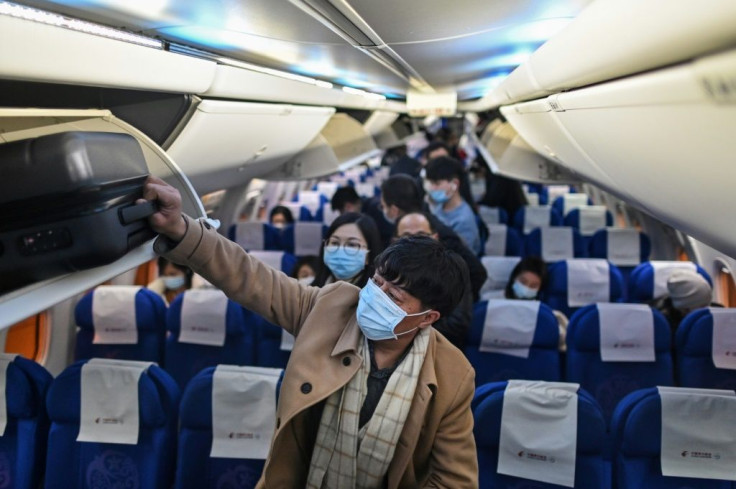Traveling Soon? New CDC Order Says Mask Up

If thoughts of traveling maskless are dancing in your head, restrict those thoughts to traveling in your own car: Do not count on taking any public transit. A new CDC order went into effect February 1 requiring all travelers, conductors, drivers, and station staff to don masks. Here’s an easy guide to following the new rules.
Where do I need a mask?
The CDC’s order “must be followed by all passengers on public conveyances.” That means, among other things, you must wear a mask on:
- Airplanes
- Ships
- Ferries
- Trains
- Subways
- Buses
- Taxis
- Ride-share vehicles
- Transport hubs (think bus stations, airports and so on)
- Any other type of transport
There are also local orders to keep in mind. Alongside President Biden’s executive order requiring that masks be worn on all federal property, the CDC recommends wearing masks whenever you’re near people outside your household, and it’s common courtesy, too.
Checklist for mask efficiency
The CDC provides the following guidelines for acceptable masks:
- A properly worn mask completely covers the nose and mouth.
- Cloth masks should be made with two or more layers of a breathable fabric that is tightly woven (i.e., fabrics that do not let light pass through when held up to a light source).
- Masks should be secured to the head with ties, ear loops or elastic bands that go behind the head. If gaiters are worn, they should have two layers of fabric or be folded to make two layers.
- Masks should fit snugly but comfortably against the side of the face.
- Masks should be a solid piece of material without slits, exhalation valves, or punctures.
.As long as they meet those standards, face coverings can be homemade, manufactured, reusable or disposable. Masks with clear plastic panels to help communicate with people who are hearing impaired are also fine, as are medical masks and N-95s.
If you’re looking to pick a cloth mask with good protection, you might want to take a look at our coverage of studies on which materials and layering provide the most protection.
What CAN’T I wear?
The CDC also listed face coverings the fail the order’s requirements:
- Masks worn in a way that do not cover the mouth and nose
- Face shields or goggles that are worn by themselves; these may be worn to supplement a mask that meets the above specifications
- Scarves, ski masks, balaclavas or bandannas
- Shirt or sweater collars (e.g., turtleneck collars) pulled up over the mouth and nose.
- Masks made from loosely woven fabric or that are knitted, i.e., fabrics that let light pass through
- Masks made from materials that are hard to breathe through (such as vinyl, plastic or leather)
- Masks containing slits, exhalation valves or punctures
- Masks that do not fit properly (large gaps, too loose or too tight)
What happens if I don’t wear one?
You will be denied entry or boarding and removed from the premises.
How long does the order last?
The order will remain in effect “until further notice” and doesn’t have an end date, but it can be reasonably expected to continue at least as long as pandemic-related states of emergency do.
Sean Marsala is a health writer based in Philadelphia, Pa. Passionate about technology, he can usually be found reading, browsing the internet and exploring virtual worlds.



























